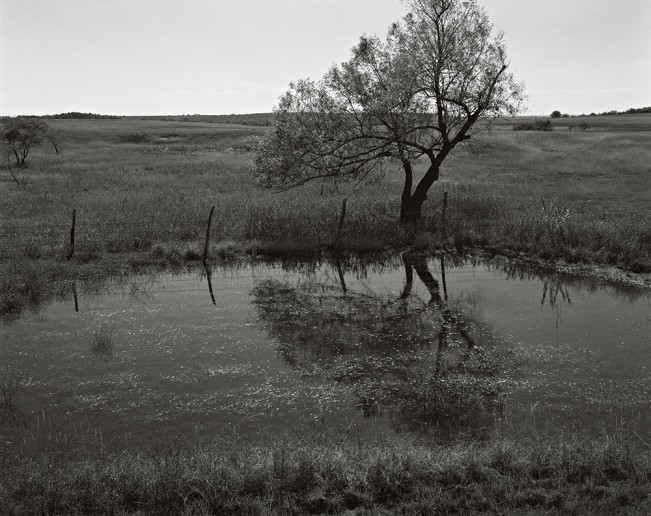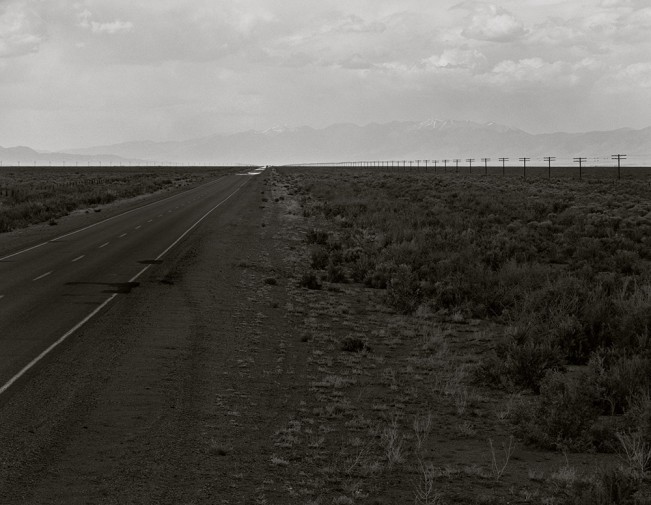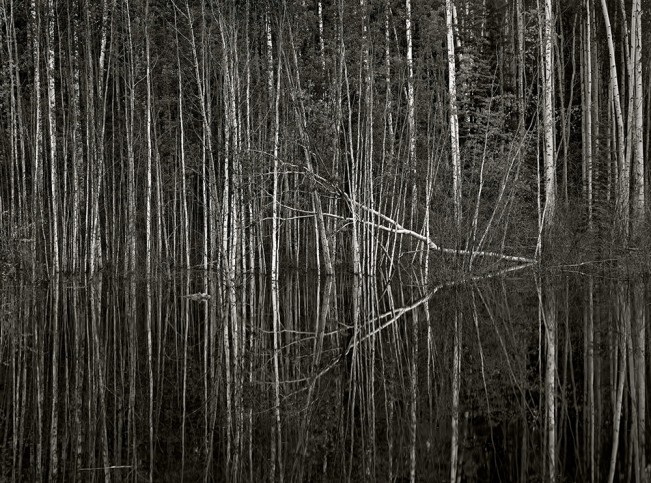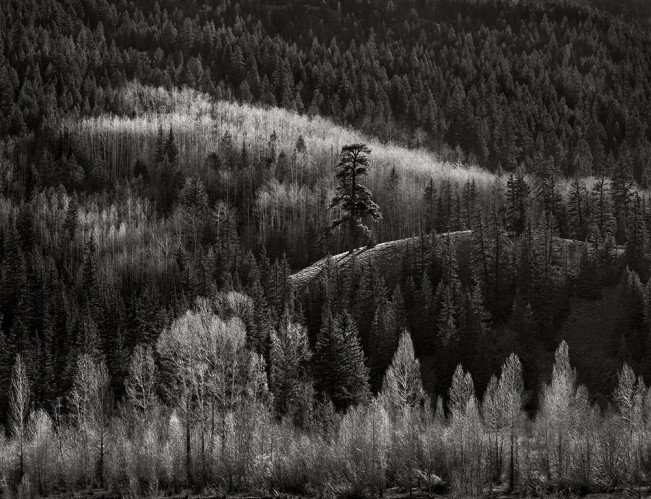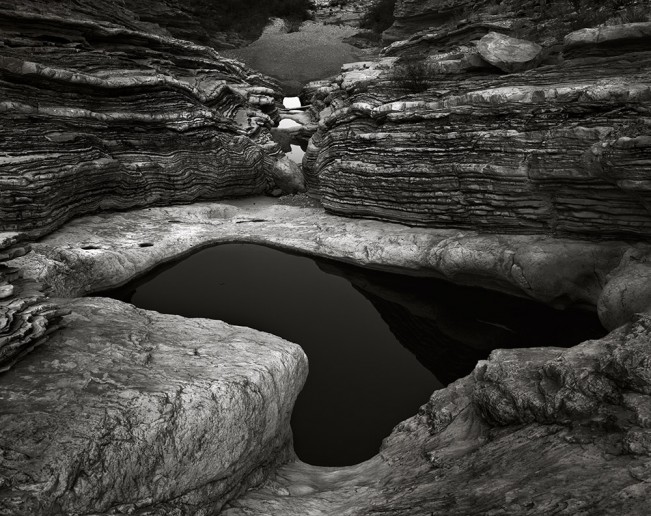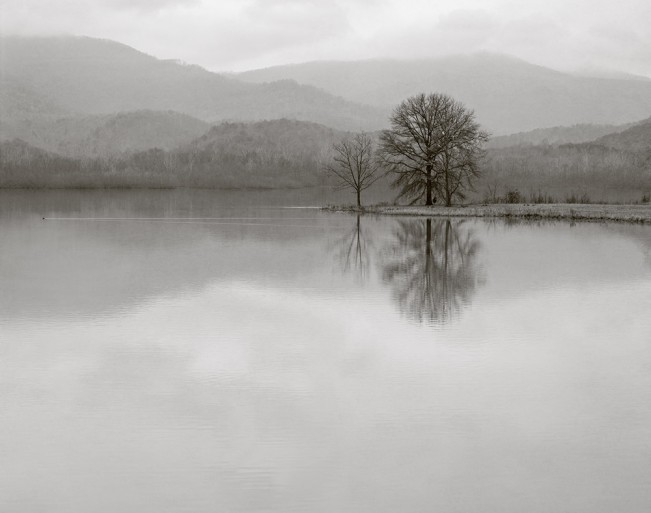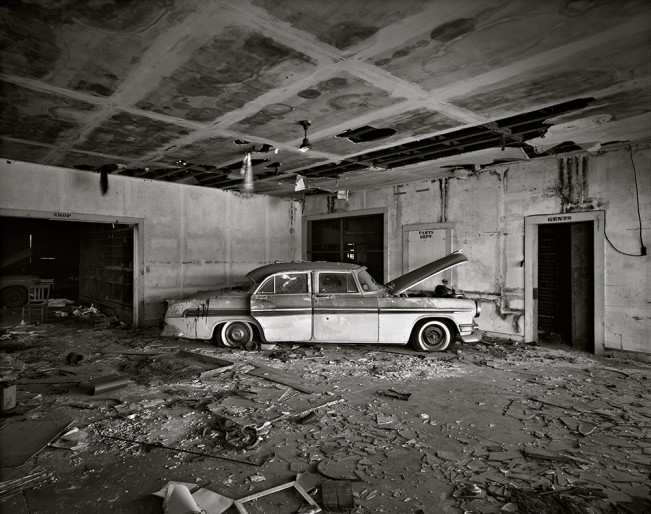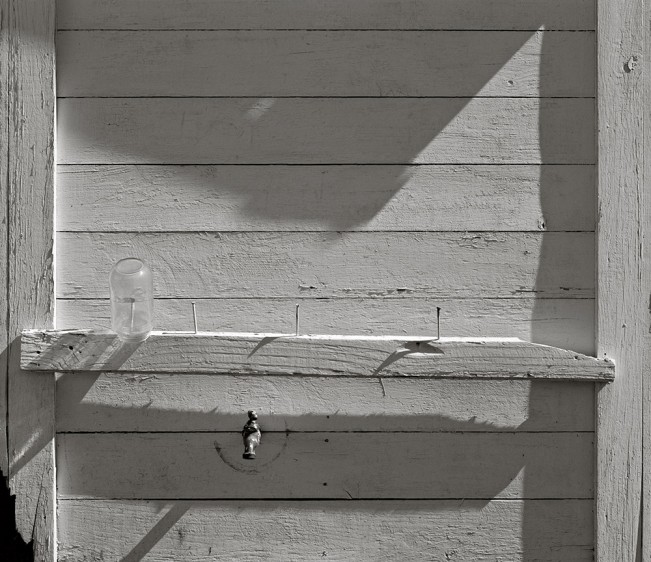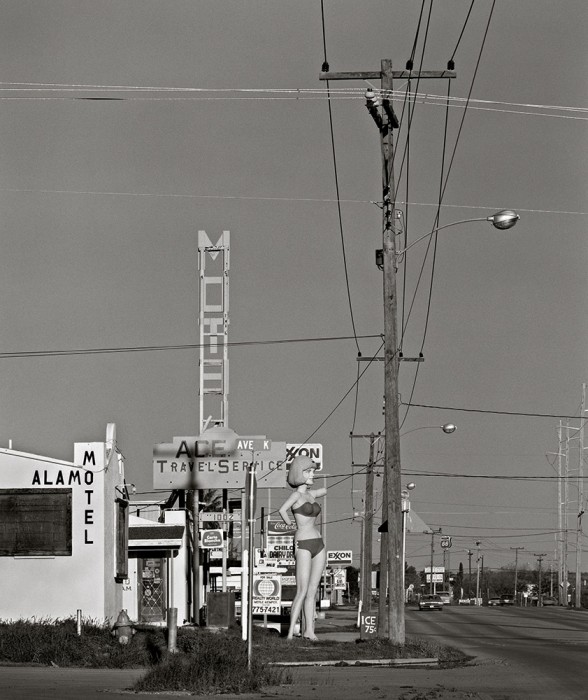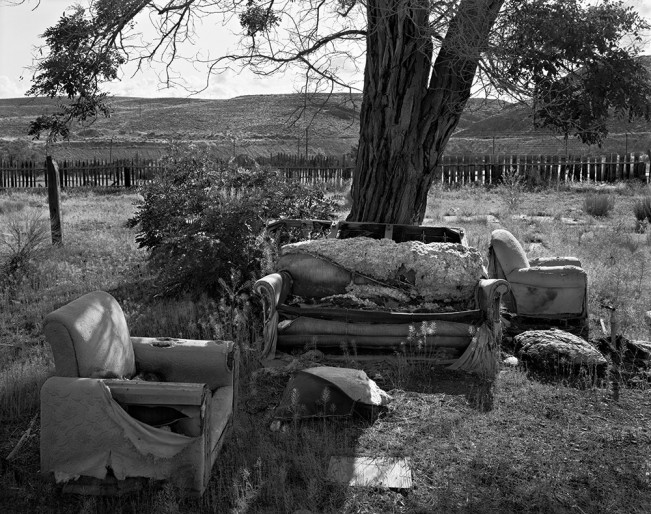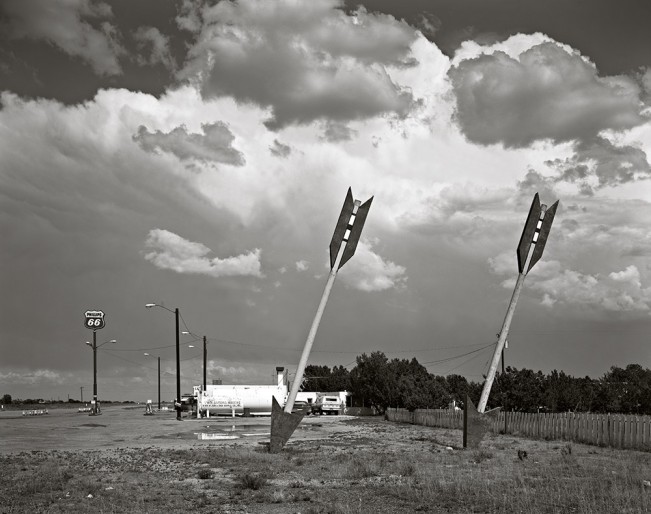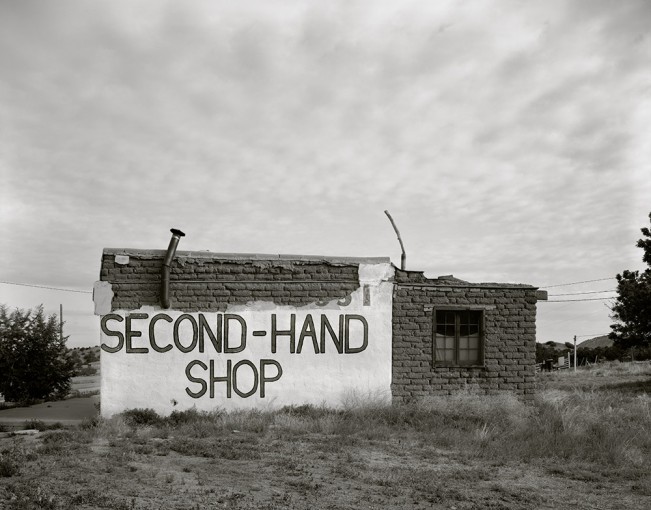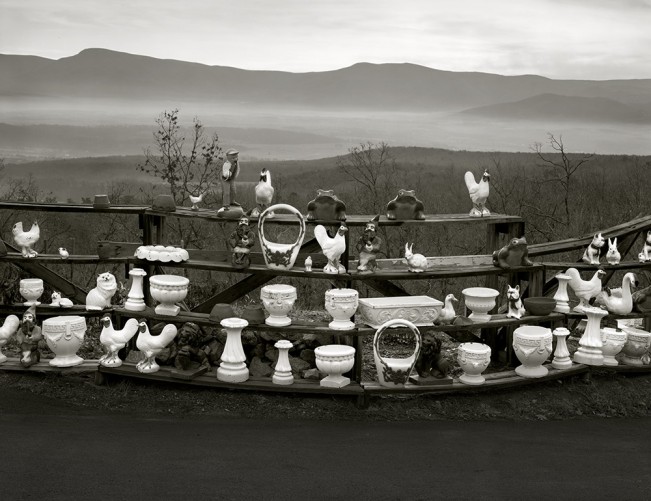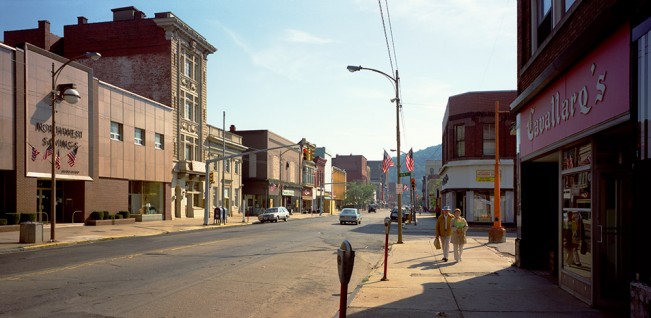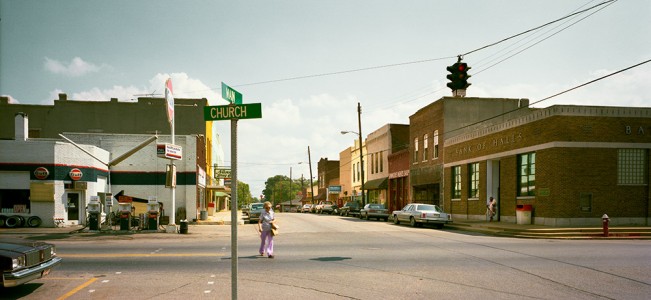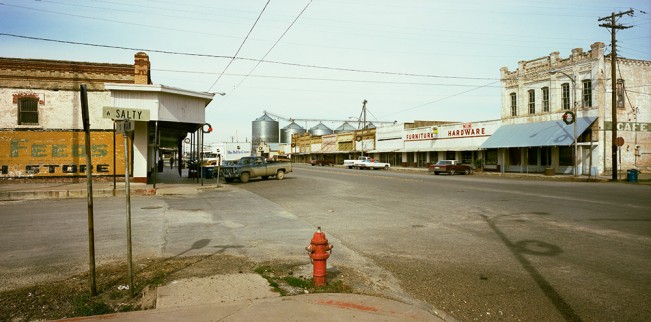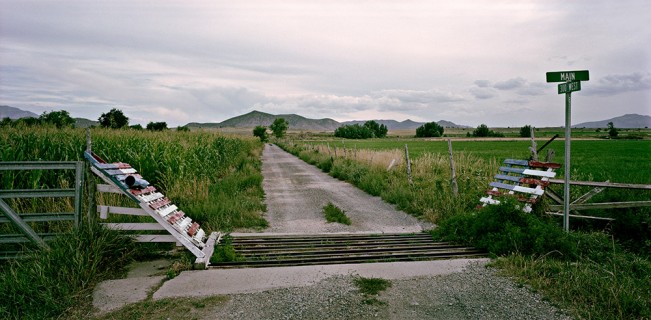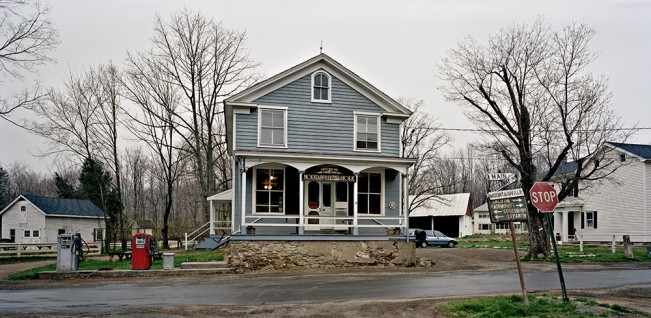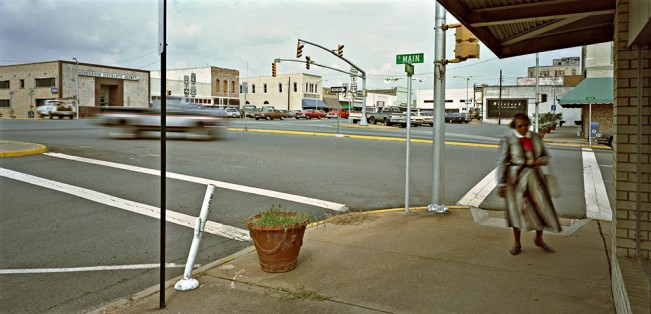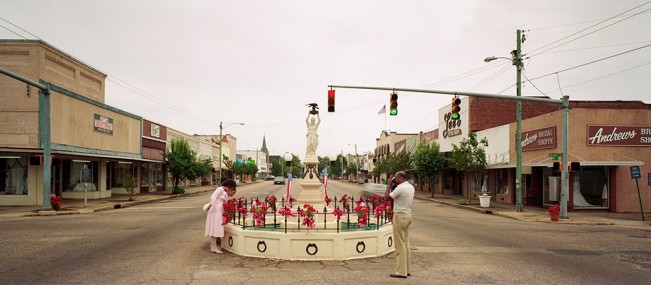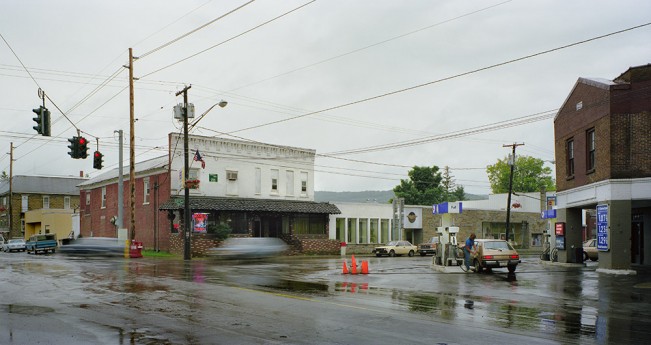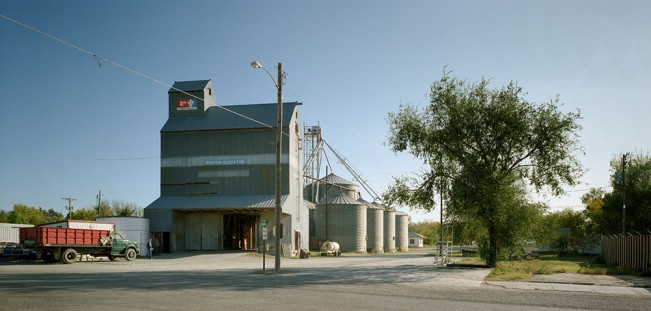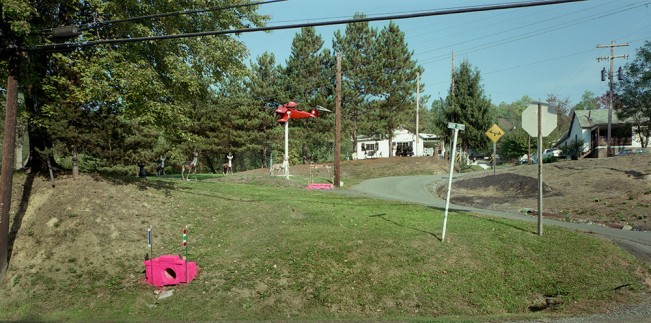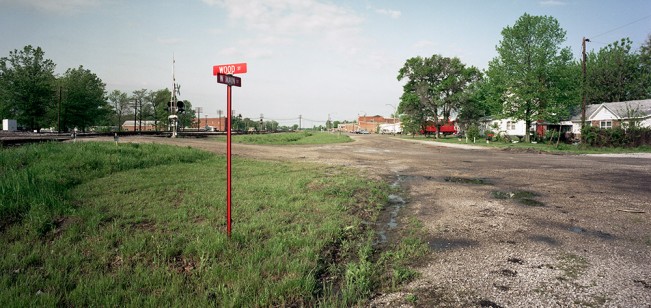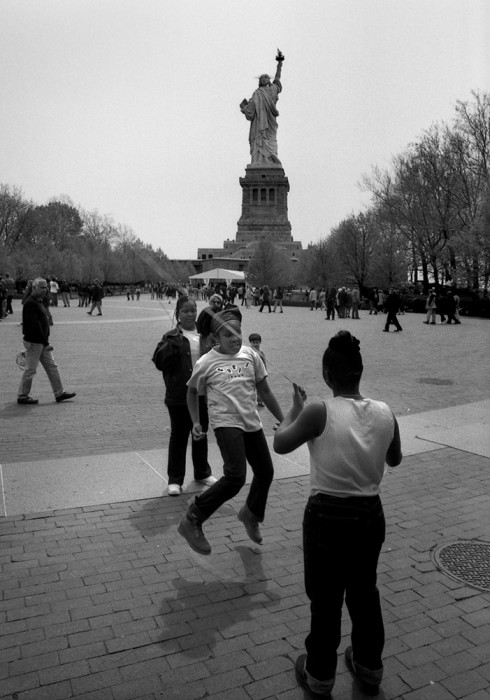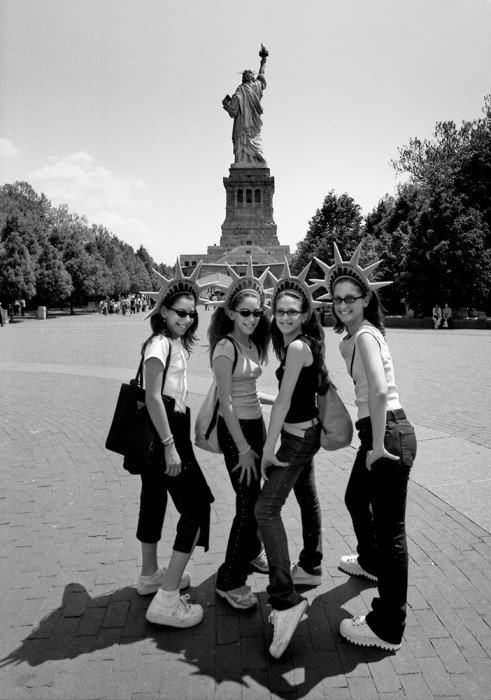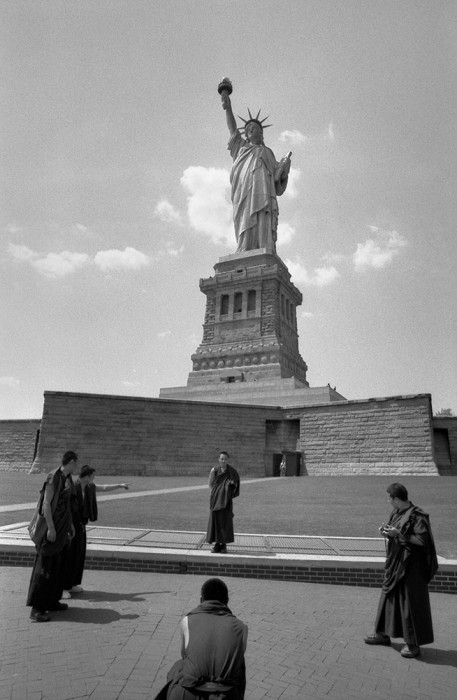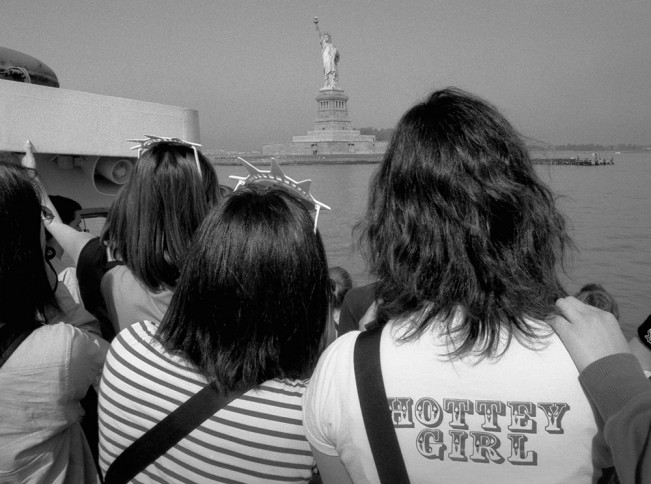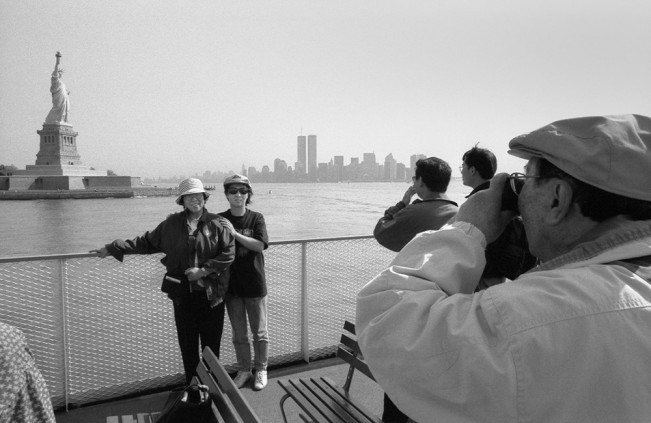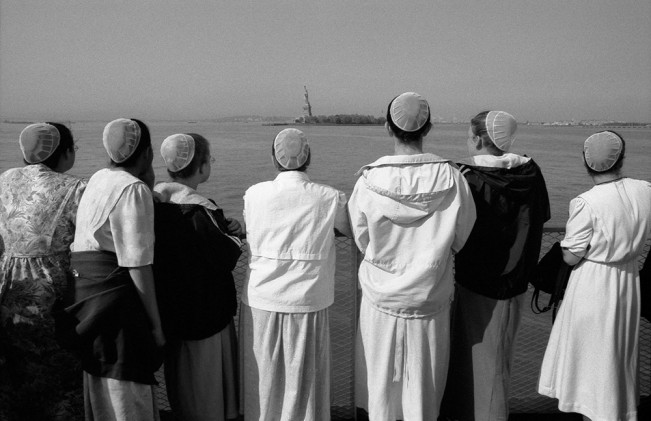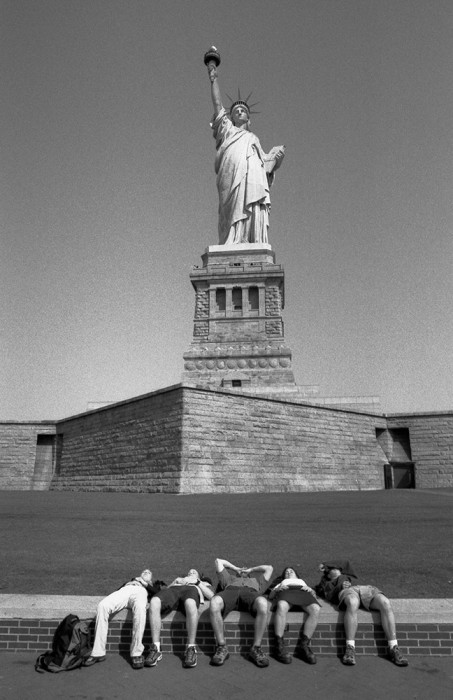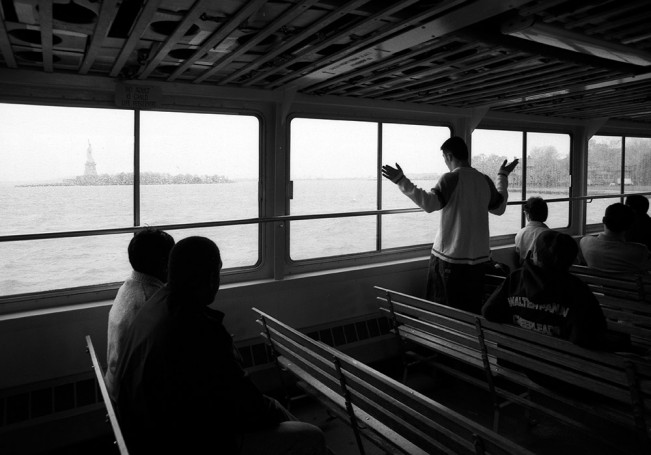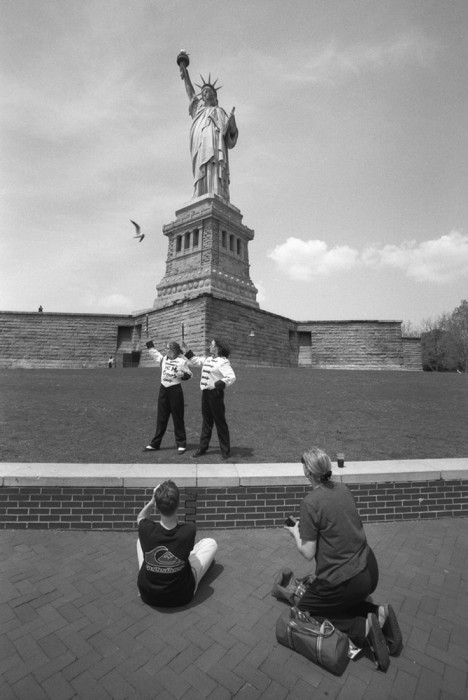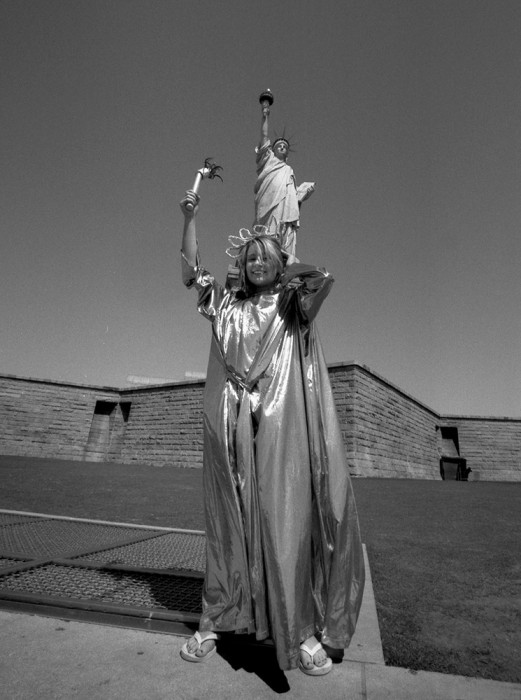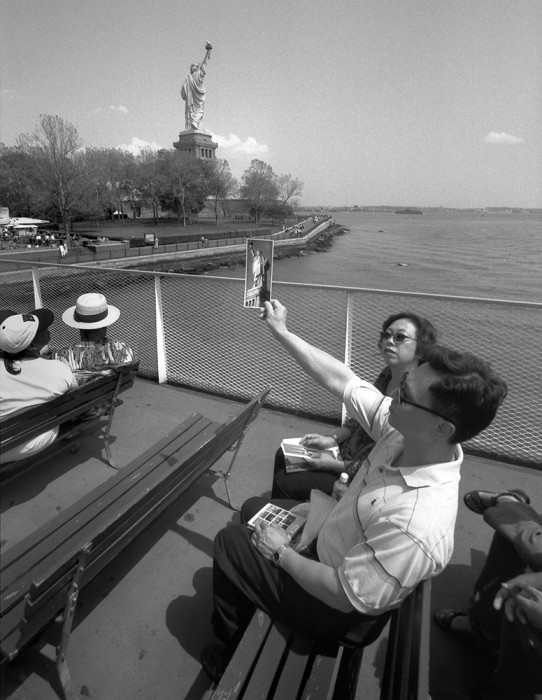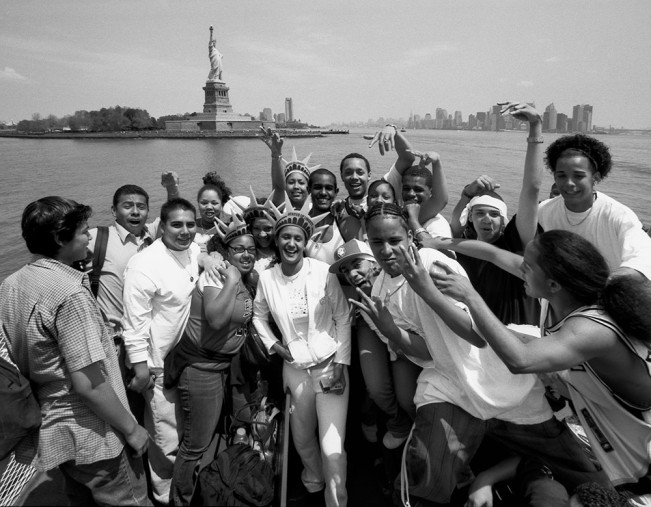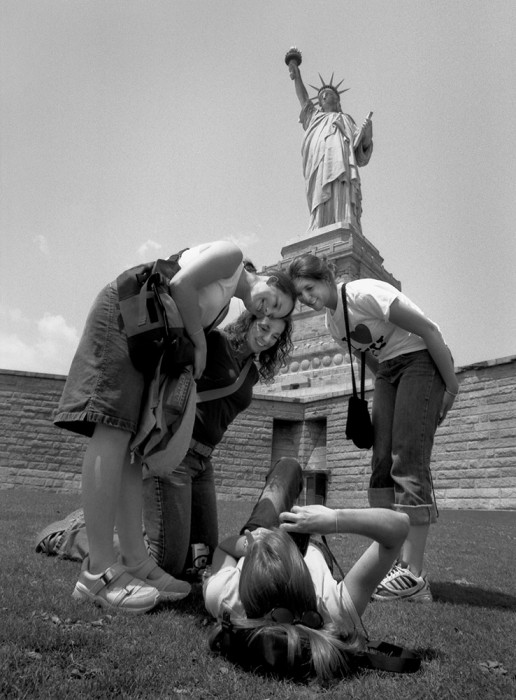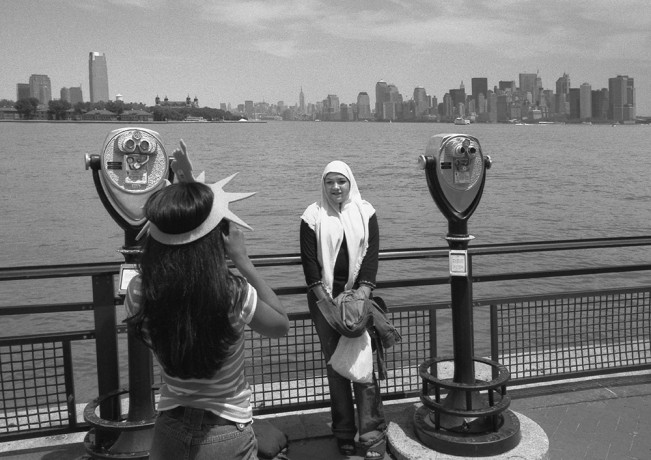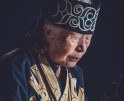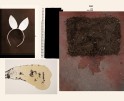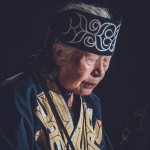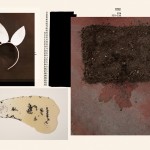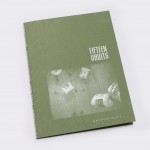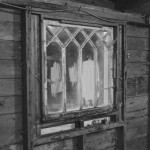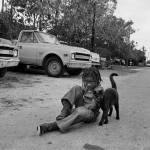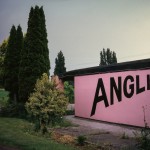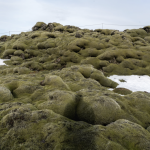Frank Armstrong: Landscapes, Main Street, At Liberty 1975-2004
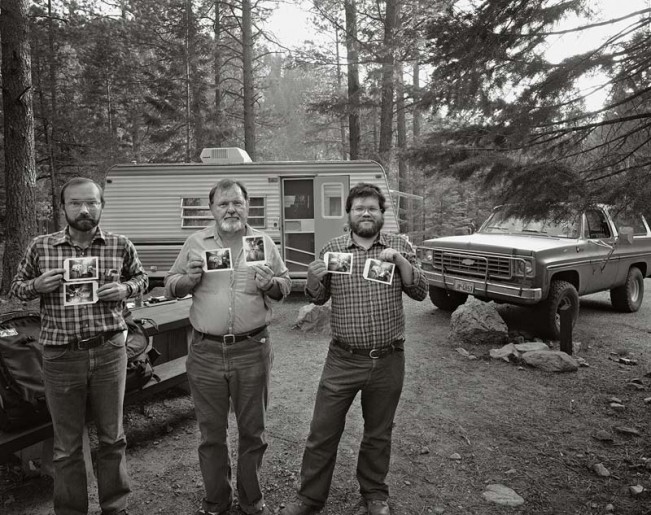
Richard Greffe, Frank Armstrong, and Roy Flukinger, “holding Polaroids of ourselves while drinking and snacking after a day messing around in Black Canyon up above Santa Fe. That’s my trailer and truck in the background.” 1983
Some things never change, as evidenced by the beards and plaid shirts in the photograph above, now a staple at photo events nationwide, but this was before the wearing of hipster glasses (those wire rims have to go!) and the drinking of craft beers. Today’s post is a wonderful journey into the life of a photographer, Frank Armstrong, who has had a camera in hand for over 50 years and has navigated the changing photographic waters with finesse. I first met Frank several years ago at the Focus Awards event put on by the Griffin Museum and have come to appreciate not only his work, but his person. He is a dedicated seer and educator, having made his educational home at Clark University in Worcester, Massachusetts for many years. He brings his love of classic darkroom photography and digital capture to the classroom and I am grateful to Frank for allowing me to mine his archives for this post. Like many photographers, Frank got started making work about places–beautiful landscapes skillfully captured with a 4×5. Sometimes he photographed the social landscape, but for years his work was centered more about exploring place than anything else. In 2001, he published a stunning monograph, Rock, River & Thorn capturing the big bend of the Rio Grande that was published by Scotia-Waterous, Calgary, Alberta, Canada (copies available at this galleries).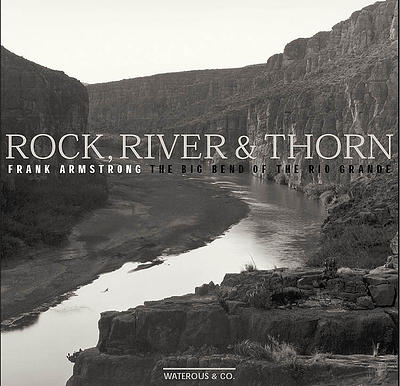
I asked Frank about making work before the yoke of project-based series boxed us in to a specific way of creating photographs and this is what he shared:
I have been giving our recent email conversation about projects vs. series some thought and have talked it over with my friend and fellow teacher, Stephen DiRado. It seems to me that most photographers work on long termed series of images. They are generally on a broad concept that evolves over time, even decades. A project is usually short based time-wise, and when it’s done, it’s done.
Edward Weston’s career was basically one long series of images landscapes, portraits, and nudes. Callahan was the same, only he re-invented the whole series when he started shooting in color. Stephen DiRado has been making images on the clothing optional beach on Martha’s Vineyard for almost 30 years, and his dinner series almost that long. He has shot every comet that has become visible since I’ve known him, and was mighty disappointed when comet Ison was “eaten” by the sun.
I think that projects are a mindset of art schools. By that I mean the necessity of time limits imposed by length of our formal education process — especially graduate school. The emphasis is on conceptualizing and acting on that concept to be completed within a given time frame. Where as photographers who didn’t go through the formal art education are driven by a different motivation, one that follows a curious interest in a particular thing or place or time. In reality, the body of work is never finished. Most all of the photographers I know well work in this manner. While they may simultaneously work on short term projects and their long term series from time-to-time, it is the series work which holds the interest at a deeper level over an extended period. Garry Winogrand never did anything other than photograph on the street — yeah, I know, in the early days he did commercial work, but once he was established as artist/street photographer, he did nothing else until he died leaving those 2400 rolls of undeveloped film behind. The man that mentored me, Oliver Gagliani, entire career was about photographing in the old abandoned ghost and mining towns throughout the west. He told me once during an interview for an article I was writing for Photographer’s Forum magazine, that he felt most comfortable in these abandoned places, especially the old mining towns, because he felt he had lived there in a former life. Not that he had actually lived there, but these place seemed familiar to him, as if he had been there before.
Images from Landscapes and Social Landscapes
Frank began work on projects (while continuing to work in series) in the 1990’s…I’m featuring Main Street and At Liberty.
Main Streets — with the idea that streets named so were a common thread in our American culture. No other county name their primary urban street, “Main.” I thought it important to include the actual Main Street sign in every image. I gave up on this project when we moved to Massachusetts 1992.
At Liberty— when my daughter came home during Thanksgiving break from college, we were with relatives in Scarsdale, NY, and one the Friday after the turkey day, I asked her what she’d like to do in the city (mean New York). She surprised me and said she’d like to go to the Statue of Liberty because she had been on six years old the time before. It was during this trip that I discovered that at the greatest symbol of liberty in the world, people are free to express their relationship to the Statue in any manner of ways — Liberty costumes, posing with right hand salutes, wearing those silly foam crowns, and just lounging about on the grass, etc. I wanted to document that. It just so happened that 911 happened during my time work on this project. A lot of the time, people go to be photographed. However, this is not an old project as it dates from 2000 through 2004.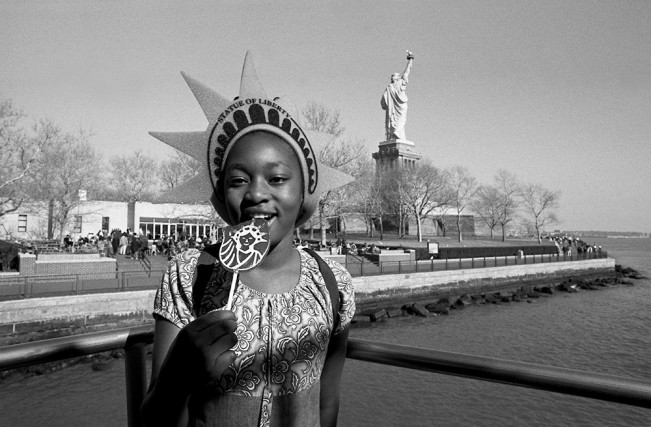
Posts on Lenscratch may not be reproduced without the permission of the Lenscratch staff and the photographer.
Recommended
-
Shinichiro Nagasawa: The Bonin IslandersApril 2nd, 2024
-
The International Women in Photo Association Awards: Lorraine Turci: The Resilience of the CrowMarch 16th, 2024
-
The International Women in Photo Association Awards: Rayito Flores Pelcastre: Chirping of CricketsMarch 14th, 2024
-
The International Women in Photo Association Awards: Louise Amelie: What Does Migration Mean for those who Stay BehindMarch 12th, 2024
-
Brandon Tauszik: Fifteen VaultsMarch 3rd, 2024

